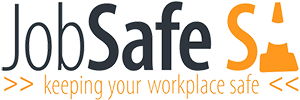Transport

The road transport industry consists of three defined sectors:
- manufacturers, suppliers and repairers of commercial vehicles including coaches and buses, and their components
- transport operators engaged in the movement of freight
- public and private operators involved in the movement of passengers.
INJURIES
The road freight transport sector had almost 2,800 workplace injury and illness claims in the three years to June 2006 at a total cost of $39.5 million and resulting in 155,000 days lost.
The main injuries recurring in the transport industry are:
- slips, trips and falls
- manual handling
- strains and sprains
- vehicle accidents
There are many injuries that can occur without you even leaving the cabin of your vehicle. Before you start driving there are specific measures you can put into place to ensure a comfortable and safe journey. In the cabin, it is important to adjust the seat, mirrors and steering wheel to your body specifications. The Transport Workers Guide to keeping safe at work outlines a simple checklist that can be completed before you begin you shift to try and alleviate strains within the cabin.
Getting in and out of cabins can be tricky. Trips and slips can occur in wet weather or if you are in a hurry. Unnecessary bending, twisting and reaching should be avoided as much as possible.
The main risk factors associated with getting in and out of cabins include:
- footholds and handholds may be slippery when wet or muddy due to smoothness
of surface - lack of uniformity – different step designs from one step to the next, from one
vehicle to another - first step too high – more than 400mm
- swinging first step – unstable
- handholds – lack of or poorly located, for example, too high off the ground, often of limited length. Handholds sometimes are not co-ordinated with footholds
- subsequent steps may be too high above the first step – more than 300mm
- hidden/recessed steps – drivers unable to see the stairway
Many of the risks from getting in and out of a cabin may be prevented or reduced through improved design. Drivers should be encouraged to raise health and safety issues with their employers as by documenting and reporting these issues will enable them to be brought to the attention of designers.
Drivers are at less risk and under less strain when access is designed according to the following guidelines:
- uniform steps, tread depths and widths
- handrails co-ordinated with footholds
- footholds with coarse grating to allow mud to be easily pushed through
- use of contrasting colours, reflective strips
- always maintain at least three points of contact when entering or exiting the cab
- do not jump from the cabin.
Athletes warm up before performing their job, why dont you?
Under the Act the employer is obliged to provide a safe and healthy working environment. The rig is considered part of the work environment and any hazards, accidents, near misses or incidents should be reported to the appropriate person (HSR, supervisor, manager etc.)
Examples of common transport driver-related hazards with solutions
| Hazard | Example solutions |
| Exposure to noise through sources such as engine, gearbox, traffic and in cabin sound. |
|
| Fatigue/Sleep deprivation |
|
| Body vibration through poor seating |
|
Basic principles of fatigue management
A number of basic principles apply when developing a fatigue management system. The following fatigue management principles are adapted from WorkSafe Western Australia.
- Give a driver at least 24 hours notice to prepare for a long working period eg: 14 hours.
- A schedule should permit a solo driver to have the opportunity for at least 6 hours of continuous sleep in any 24 hour period and preferably between 10 pm and 8 am.
- Where night work exceeds two consecutive periods of work between 10 pm and 8 am compensation of more than one day off in 7 should be built into the work cycle.
- Minimise irregular or unfamiliar work rosters.
- Operate flexible schedules to allow for short break time or discretionary sleep.
- Minimise very early departures to give drivers the maximum opportunity to sleep in preparation for the trip.
- When drivers return from leave, minimise night-time schedules and rosters to give drivers time to adapt to working long hours especially at night.
- Require a driver to present and remain in a fit state for duty including not being impaired by alcohol or drug use.
- Develop a written policy on fitness for duty in consultation with employees and unions.
- Provide an appropriate truck sleeper berth if drivers will need to sleep in the vehicle.
- Identify health problems that affect the ability to work safely, eg. diabetes.
- Provide appropriate employee assistance programs if necessary and practicable.
- Provide drivers with information and assistance to promote management of their health.
- Provide a working environment that meets appropriate Australian Standards for seating and sleeping accommodation.
- When drivers work a continuous rotating shift system with a shift roster of 5 days or more there should be 24 hours of Non Working Time between shift changes.
- Ensure drivers are counselled regarding off shift activities, i.e. to avoid excessive drinking, fatty foods and moonlighting. Exercise is a good idea.
Other hazards in the Transport industry are
| Noise | Chemicals | Vibration |
| Fatigue | Electricity | Forklifts |
Note:
Many companies have been found in breach of their OHS obligations to employees.
Take an informative look at the successful convictions by SafeWork SA
Transport Health and Safety
SafeWork SA
Acknowledgements:
WorkCover SA resource A Transport Workers Guide to keeping safe at work.
SafeWork SA
Transport Workers Union
Queensland Government – www.justice.qld.gov.au.
